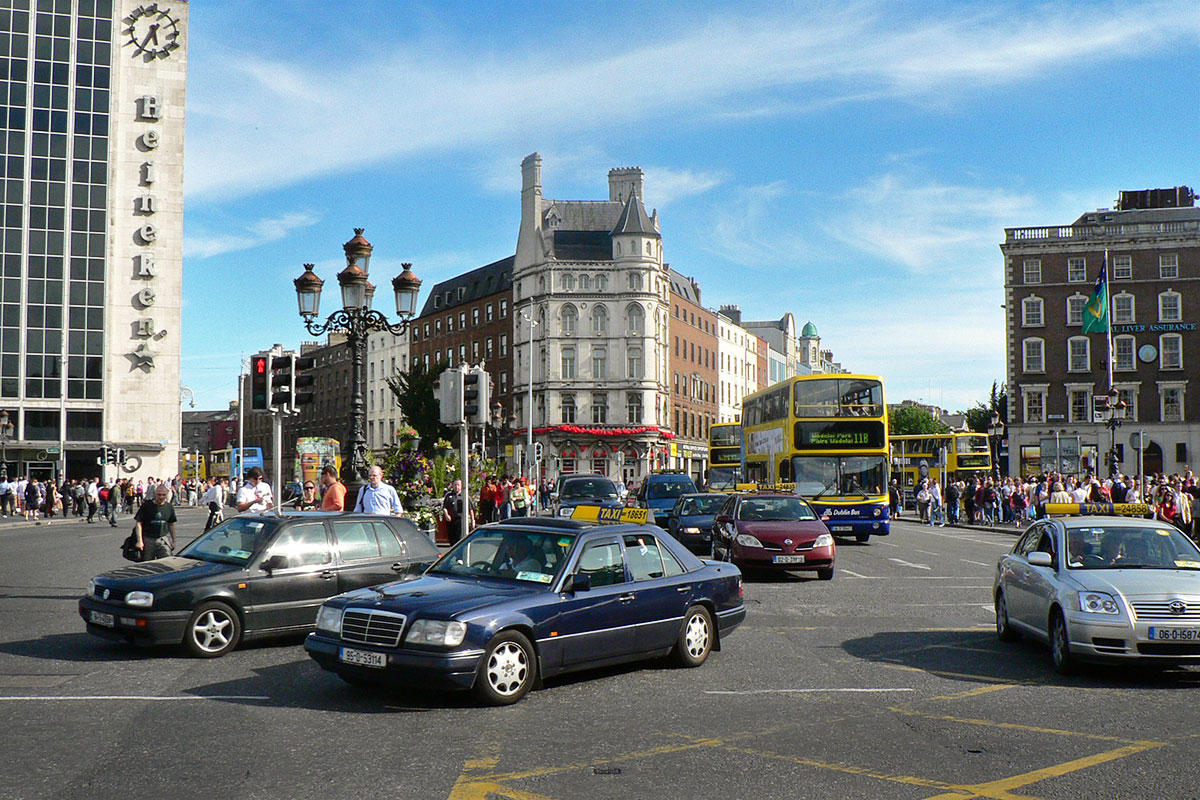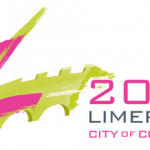Inside the world of traffic management in Dublin city


It’s safe to say that traffic jams are the bane of every motorist’s life. Everybody can identify with the feeling of being stuck in a vehicle on the road, in a line of traffic that doesn’t appear to be going anywhere soon. The feeling of frustration at being stuck in a traffic jam is exactly the same whether it’s the inevitable daily bottleneck that occurs during our journey to work, or endless delays on motorways at the start of a well-deserved holiday.
However, if you think that your journey to work this morning took longer than necessary, spare a thought for commuters in the Brazilian city of Sao Paolo. According to the city’s traffic management agency in May of this year, the delays during rush hour added up to a 344km (214-mile) tailback on one of the city’s motorway’s.
A report that was released last June, by the satellite navigation manufacturers Tom Tom, indicated that Dublin is the 10th most congested city on the planet. According to their fourth annual global traffic index, the company claimed that shortcuts taken by people in the city usually add around 50% extra travel time to their journeys and that commuters on average spend eight working days a year in traffic.
The company found that the worst periods in the week for traffic jams in the Irish capital were Tuesday mornings and Thursday evenings. Their information showed that Dublin is the sixth most congested city in Europe with a congestion of 35%. This percentage figure means that on average travel times in Dublin were 35% longer than they would be on uncongested routes.
The situation is obviously worse during the peak rush hours in the morning and the evening. In the morning rush-hour, travel times were 74 % longer than free-flow traffic, while, in the evening, travel times were nearly at 71%.
These delays are not only a source of frustration for drivers, there is also the economic cost of lost hours, both work and leisure; as well as delayed shipments that impact on a city’s financial input and output.The information indicated that Dublin was in the top 10 most congested cities in the world along with the likes of Mexico City, Istanbul and Rio de Janeiro.
The construction in the city centre due to the works being carried out on the new Luas tracks has also contributed to a rise in traffic congestion in Dublin. The construction is not expected to be finished until 2017 and will link the two existing Luas lines in the City Centre, and also connect Cabra – at Broombridge rail station – to St. Stephen’s Green.
There are many major challenges that are facing urban planners and politicians in towns and major cities throughout Europe. A major issue is to try to find the right balance between the high and ever increasing demand for personal mobility as well as steady economic growth, while managing to always respect the environment in the process, while providing a high standard quality of life for the people living in the region.
Every city in the world, whether it’s Dublin, London or New York suffers from its own individual sets of traffic problems. While the scale of the issues may differ, depending on the size of the location, there are a few common factors involved. The fact that many people insist on driving their own car to work as opposed to carpooling or using public transport for instance, contributes to the problem. Unfortunately, for the environment and also the problem of traffic build-ups, the majority of people are reluctant to cycle to and from work.
Is there a permanent solution to this issue? Traffic planning authorities in many cities are hoping that initiatives currently being implemented like cycle paths, car-pooling lanes, and improved public transport will ease the everyday congestion. Other cities have taken more extreme measures , like banning cars from driving on certain days and alternating between cars with licence plates that finish in odd or even numbers.
One thing that will more than likely always remain a constant is that provisions will need to be made for vehicle based mobility in towns and cities and this will continue to be an important part of traffic management planning. As the business and commercial centre of the country, Dublin experiences heavy traffic congestion on a daily basis. Garda Post posed some questions to a spokesperson from Dublin City Council to find out what provisions are in place to deal with traffic congestion in the city and how they manage to deal with this major issue in the capital.
What is the main function of the Dublin Traffic Management and Incident Centre and what role does it play in the management of traffic congestion in Dublin?
The Dublin Traffic Management and Incident Centre provides a single purpose built location to integrate the traffic management core systems to support safe and efficient management of the urban transportation network and transport network for the Greater Dublin Area.
The facility was upgraded and commissioned in June 2013 and includes an incident management centre to provide a purpose built facility which centrally coordinates the management of major events and incidents in the Greater Dublin Area.
It incorporates a dedicated traffic control operations centre together with a local incident room with an external incident room and off site incident room to coordinate and manage major incidents in the Greater Dublin Area.
In Australia and the US they have similar traffic update and control centres which, upon an incident occurring, advise you of alternative routes to use to get where you need to go. Is this something that could be introduced here?
Currently the Traffic Management and Incident Centre operations team use a network of CCTV cameras located across the city and in neighbouring local authorities to monitor traffic flow across the city transport network to locate anomalies in traffic flow and incident detection.
Once an anomaly or incident is detected the operators can manually intervene using the adaptive traffic control system SCATS to override the automatic selection of time given to traffic flow in a particular direction which would be set to optimise the network for normal traffic flow but for a particular incident this can be allocated to traffic flow in another direction to elevate congestion.
The Environment and Transportation Department manages a network of Variable Messages Signs deployed across the city used for the management of the cities car parks and these are also used to display information and updates on incidents and diversions to inform road users of incidents and advise on alternative routes.
Ireland’s only dedicated traffic radio program “Live Drive” is broadcast live from the traffic management centre week days between 07:00am – 10:00 and 04:00 pm – 07:00 pm providing up to date traffic reports on the traffic situation across the GDA and advises listeners on incidents and traffic congestion and offers alternative routes where possible.
AA Roadwatch also has a presence during peak times and they use the CCTV network to update their website and traffic bulletins for national radio stations. Traffic control operators also provide updates on our Twitter account on incidents and traffic updates though out the day.
Is there a lot of technology involved in the traffic management process?
Yes. Dublin City Council has made significant investment in its Intelligent Transportation Systems and communications infrastructure used to manage the transport network. The opening of the new Dublin Traffic Management and Incident Centre provided extra capacity and resilience for the traffic management systems to ensure that continuity of service can be maintained and future proof its systems and operations. Operations are supported by a dedicated traffic data centre and CCTV network on Dublin City Councils private fibre network.
As a member of IBMs Smarter Cities Challenge and through our involvement in EU funded projects like the INSIGHT project we are partners in research and development projects to develop and deploy new technologies to automate the detection of anomalies in the transportation network. The traffic management systems we use and the data these generate are being used to develop this and Dublin is the test bed for this project.
Schools have reopened recently; does this significantly impact on the traffic in the city?
No. With the reopening of the city’s schools there is a slight increase in traffic volumes (5% – 10% maximum) but the impact is localised to the schools and surrounding routes and it is not significant for traffic flow city wide. With autumn and winter we see a deterioration in weather conditions which alters commuters transport modes with some people who use cycling or walking during the summer opting to use their private vehicles and this has an impact on traffic.
What is the protocol to alleviate traffic or solve problems as they occur in the citycentre?
To alleviate traffic or solve problems as they occur in the city centre the city council uses an adaptive traffic management system called SCATS (Sydney Coordinated Adaptive Traffic System) to coordinate and manage the traffic in the city.
SCAT primarily manages the dynamic timing of signal phases at traffic intersections. The system uses sensors at each traffic intersection to detect vehicle presence in each lane and pedestrian demands. The system is optimised to coordinate traffic flow using predefined plan selection to maximise through put at a junction.
The traffic control operators can manually select plans to override automatic selection to manage incidents. Through the use of the CCTV network to monitor traffic, operators can detect anomalies and act immediately to intervene and alleviate congestion.
Traffic management plans are put in place to manage and coordinate events in the city. This is achieved using the SCATS system where action plans can be used to bias traffic flow to assist in dispersing traffic following an event and increasing public transport priority at junctions.
The Traffic Management Centre monitors planned events in the city to coordinate simultaneous events and broadcasts these plans in advance through our mixed media sources. Coordination between the traffic management centre, public transport service providers, An Garda Siochana and other stakeholders is important when managing planned events that will have an impact on the city’s transport network.
How do you co-ordinate with the Gardai and the emergency services?
The Dublin Traffic Management and Incident Centre has a long history of working with An Garda Siochana and emergency services dating back to the opening of the original traffic control centre. Access to our CCTV network is provided to the Gardai in their control and command centre, to the emergency services, public transport providers, the Dublin Port Tunnel and other local authorities over our private fibre network.
To manage and coordinate major events and incidents we provide the Incident Management Centre as a central location where the relevant stakeholders can organise and coordinate their agencies within a strategic framework. This enables stakeholders to access our systems and disseminate the relevant information back to their people on the ground streamlining the communications process and centrally managing the situation.
Working closely through daily interaction between the Traffic Management Centre and the other stakeholders mentioned above while being backed up by the Intelligent Transportation Systems support team who work closely with their counterparts in the various other agencies to share and access data the Traffic Management Centre and its infrastructure coordinating all services in the GDA.
The recent rail strikes caused a major upsurge in traffic throughout the city. How did you plan to deal with this incident and similar incidents?
Traffic management plans are put in place to manage and coordinate events/incidents in the city. Having many years experience in the management of incidents and events in the city coupled together with a highly experienced control centre operations team allows for the preparation of traffic management plans to target specific events which can be monitored in real time from the control centre and adapted in real time to manage a dynamic transport network as best we can.
There have been new cycling initiatives implemented recently. How do you deal with the fact that it perhaps does not suit everyone to leave their vehicle at home and use a bicycle? What are the percentages of road users vs. cyclists in the city?
The growing demands being placed on saturated urban infrastructures, coupled with physical and fiscal constraints that limit the options to increase the network capacity require road authorities to ensure that they have an integrated traffic management policy. Dublin City Council’s sustainable transport policy promotes the use of public transport, cycling and walking.
There is a strict car parking policy in the city centre and a policy decision was taken back in 1994 not to allow for increases in private cars entering the city. Its policies prioritise investment in public transport, upgrade and extensions to existing cycling infrastructure and increasing the cycle network and pedestrian facilities. While we recognise that cycling may not be an option for everyone, polices to improve public transport and cycling are prioritised over private car use.
There was an increase of 14.1% in the number of cyclists crossing the canal cordon between 2012 and 2013, with 9,061 cyclists counted in 2013 compared to 7,943 cyclists in 2012. This represents the number of commuter journeys into the city by cyclists.
Between 2006 and 2013 the volume of cyclists crossing the canal cordon during the morning peak period has increased by 87.2%. The percentage mode share for car (35.6%), cycling (4.7%) and walking (9.15%) used by people crossing the Canal Cordon inbound between 07:00 and 10:00 for 2013 show the percentage share for cyclist increase year on year since 2006 with the car share decreasing.
Government policy aims to achieve a 10% modal share for commuters cycling nationally by 2020. To achieve this figure Dublin with the highest modal split of cyclists will need to target a modal share of 25% -30% of commuter journeys by cyclists. This figure will be achieved by providing a safe efficient infrastructure to cyclists to access the city and continue to make any journeys once in the city by bike.
By providing the infrastructure to increase the modal share for cycling and reducing the number of private car journeys we will see improvements in public transport times and less congestions for those who need to access the city by private vehicle.

